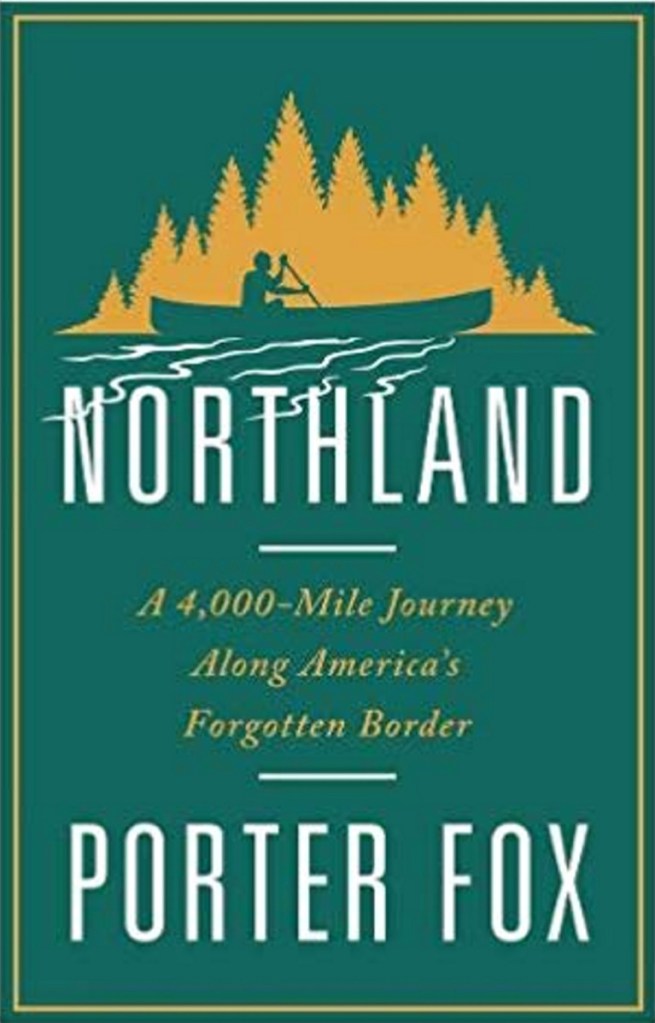Porter Fox was brought up on Mount Desert Island, where his father was a boat-builder sought after by the likes of Walter Cronkite. Summers were spent at a family hunting lodge on the other side of the Canadian border. Together, these places imprinted Fox with the feel for what he calls the northland.
When he got older, Fox moved westward. But he stayed within the northern reaches of the United States, where he recognized the familiar “ethnic communities with centuries-old histories, small towns that modern America skipped over, forgotten industries and Old World professions that rely on hands, not machines.” Fearing that all this was disappearing, Fox decided to trace America’s 4,000-mile border with Canada, from Maine to Washington state. He also wanted to find out if his “arcadian concept of the northland” really exists. He started, Fox writes, just like explorers did for 400 years before him: “I packed a canoe, tent, maps, and books and headed for the line.”
The expedition, undertaken over the course of several years, was divided into five geographical sectors. These become the narrative structure of “Northland.” Running east to west, they are: The Dawnland (Maine), The Sweet-Water Seas (Great Lakes), Boundary Waters (Minnesota), Seven Fires (The Dakotas), and finally The Medicine Line (Montana to the Pacific, which is the longest straight-line border in the world.) Fox’s canoe took him only as far as the headwaters of the St. Croix and Monument Brook. After that he opted for a freighter in the Great Lakes, paddled with a guide through the Boundary Waters and did the rest by automobile.
Each section breaks down into a colorful tapestry of history, geology, culture and happenstance. Fox is the editor of an online travel magazine called Nowhere, which boasts, “Do not expect reviews of where you should spend your money or guidebooks about how to spend your day.” When traveling, Fox makes a point of taking it as it comes.
On his canoe trip in Maine, he enjoys the silence and beauty of a night camping on the shore; zigzags back and forth along the borderline; and almost gets swamped crossing a flowage. In “Sweet-Water Seas,” he gets a rather gloomy insight into the sheer boredom faced by the crew of a modern Great Lakes freighter. In “Seven Fires,” the most immediately arresting chapter, he spends a couple of nights at the Standing Rock Reservation where tribes from all over the country have joined protesters over the Dakota Access Pipeline. The protesters named their camp Oceti Sakowin, which means Seven Council Fires and was the actual name of the Sioux tribe. After that, he explores the former Sioux territory and finds the dismal aftermath of the Dakota oil shale bust.

Environmental threats, not surprisingly, are an unfortunate part of the fabric he discovers all along the way, including some I hadn’t considered before: for example, freighter traffic in the Great Lakes will be extremely vulnerable to water levels affected by climate change.
Throughout his journey Fox weaves together a fascinating history: of the original people and their different tribes; of the first explorers, especially the French; of the surveyors who laid out the border bit by bit throughout the 19th century.
His encounters with the men and women who currently populate the northland are well drawn. After a while, though, certain prejudices appear in what he chooses to describe. Zigzagging across a 4,000-mile border involves encounters with plenty of border agents, none of them ever smiling. A tour group “shuffling around” a museum greets the guide’s stories (“trivia”) with “blank stares,” while the author notes that an octogenarian’s comb-over “was a work of art.”
At the end of the line, something about the book doesn’t quite click. Despite his statement at the beginning that, “There was no time line,” there are occasions when the reader feels he travels from stop to stop like the much-mocked birdwatcher searching just to check off a species on his life-list. When in Montana, Fox finally sees “the cut” (the actual border line; much of it has till now been mid-stream in the water and so invisible), he asks the border agent if he can walk along it. “You’re gonna want to tell the patrol before you do something like that,” he’s told. Fox apparently is satisfied to leave it that.
There is also something about describing the 49th parallel as the northland that grates, although Fox says that that’s what “northlanders” call it. The hard geographical reality is that the northland is the north of Canada. For this reader, Fox’s “arcadian concept” felt too much like a self-conscious construct, with more than a hint of “Game of Thrones.”
Thomas Urquhart is a former director of Maine Audubon and the author of “For the Beauty of the Earth: Birds, Opera & Other Journeys.” Contact him at:
turq1000@gmail.com
Send questions/comments to the editors.


